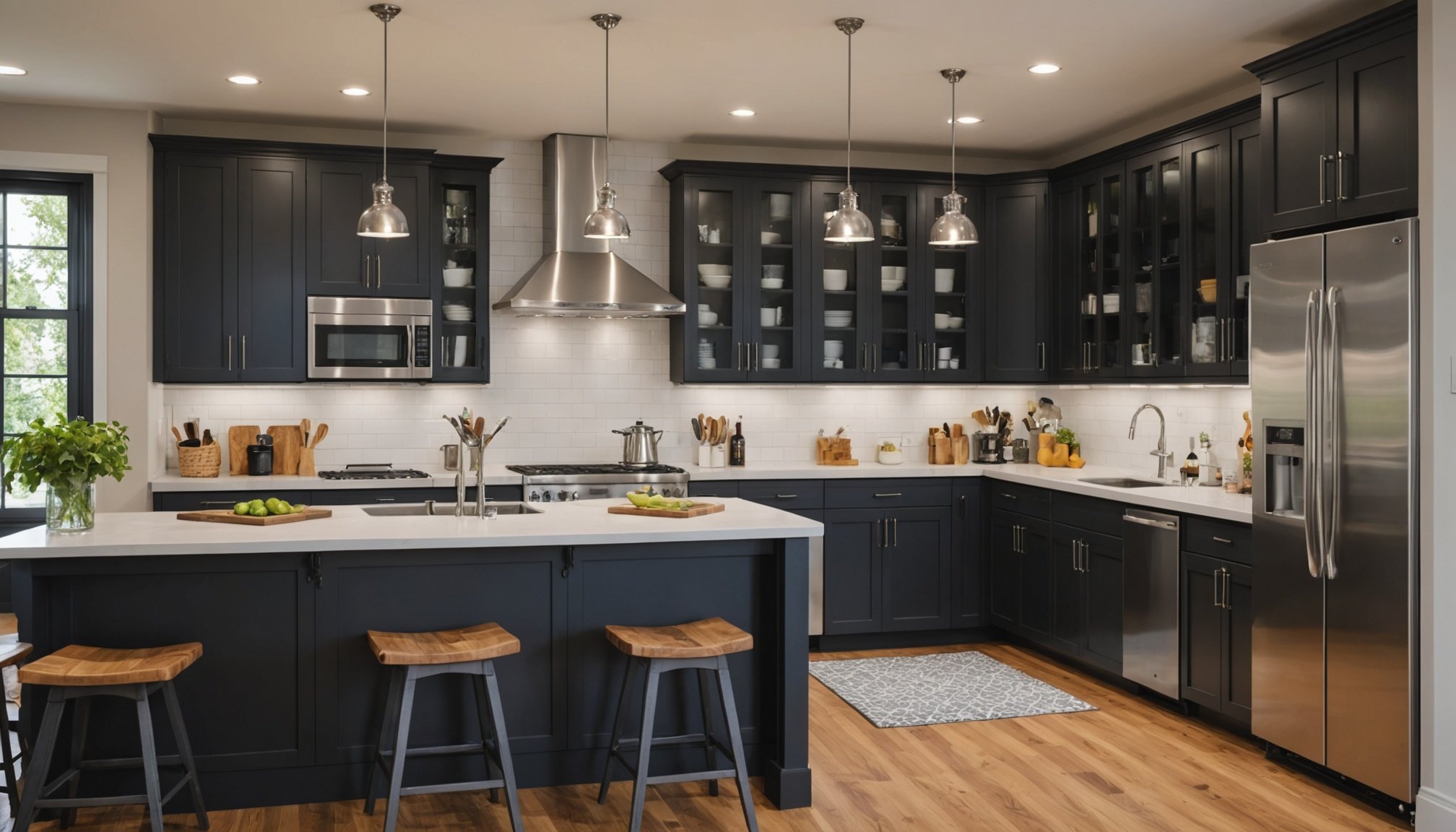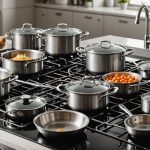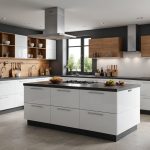Designing a kitchen that enhances efficiency in cooking is a crucial aspect for both commercial and home kitchens. A well-structured layout can significantly improve the workflow while reducing unnecessary movement and frustration. Whether you are a professional chef or a home cook, understanding the principles of kitchen design can transform your cooking experience. In this article, we will explore various strategies and tips on how to create a kitchen space that encourages smooth operations and efficient storage.
The Importance of the Kitchen Triangle
The kitchen triangle is a fundamental concept in kitchen design that focuses on the relationship between the three primary areas: the stove, the sink, and the refrigerator. These are the areas where you will spend most of your time while preparing meals. When these three points are positioned within a convenient distance from each other, the kitchen becomes more functional and enhances your cooking workflow.
Also to see : How can I upcycle old kitchen items into trendy home décor?
To achieve an effective kitchen triangle, aim for a distance between 4 to 9 feet between each appliance. This allows staff or family members to move freely without bumping into each other. A well-designed triangle not only minimizes the distance you travel but also reduces unnecessary steps, making the process of cooking more efficient.
Moreover, the triangle should not be obstructed by cabinets or other appliances. An open design encourages a smoother transition from one task to another. You might also consider placing an island in the center of your kitchen. This can serve as additional workspace and can enhance the triangle by providing easy access to frequently used items. An island can also double up as a social gathering point, making your kitchen a more inviting area.
This might interest you : How can I teach my kids basic cooking skills while keeping it fun?
In summary, implementing the kitchen triangle principle will greatly enhance your cooking experience. Each time you step into your kitchen, remember the importance of keeping these key areas interconnected to promote efficiency and ease in your culinary endeavors.
Optimizing Your Kitchen Layout
An optimized layout is essential for maximizing space and improving efficiency. Consider the work zones in your kitchen: preparation, cooking, serving, and cleaning. Each zone should be strategically placed to streamline your workflow.
Start with the preparation area. This is where you will chop, slice, and dice ingredients. Ensure this space is close to your sink and refrigerator. Having storage for utensils, cutting boards, and other prep tools within arm’s reach allows for quick access, reducing the time spent gathering materials.
Next, focus on the cooking area. Your stove and oven should be easily accessible from both the prep area and the serving area. If you have multiple staff working in the kitchen, consider incorporating double ovens and more stove space to accommodate simultaneous cooking tasks. Additionally, keep your most-used pots and pans nearby to minimize movement.
The serving area should be easily reachable from both the cooking zone and the dining area. A clear path to the table or serving counter helps in effective meal service.
Lastly, the cleaning area—typically your sink and dishwasher—should be placed logically between the cooking and serving areas. This arrangement allows for efficient cleanup and dish management. By carefully considering the placement of these zones, you can create a kitchen that flows seamlessly, making your cooking experience more enjoyable and less chaotic.
Effective Storage Solutions
Storage plays a vital role in any kitchen design. Efficient storage solutions not only declutter your space but also enhance your workflow. The goal is to keep everything within easy reach while maintaining an organized environment.
Start by analyzing your appliances and tools. Make sure your most-used items are easily accessible. This may involve adjusting the height of shelves or the placement of drawers. For instance, pots and pans should be stored in lower cabinets to prevent heavy lifting. Consider using pull-out shelves or lazy Susans to maximize corner cabinet space.
Incorporating vertical storage can also free up counter space. Wall-mounted shelves or magnetic strips for knives can keep essentials close while maintaining a clean countertop. Labeling containers can further enhance organization, helping staff quickly find what they need without rummaging through drawers.
Another aspect is to utilize the inside of cabinet doors. Small racks or hooks can hold spices or utensils, keeping them at your fingertips without cluttering your main storage areas. Finally, don’t forget about under-utilized spaces, like the area above cabinets. It can be a great spot for decorative items or seldom-used appliances.
Investing in smart storage solutions ultimately leads to a more efficient kitchen, where everything you need is at your fingertips, allowing you to focus on cooking rather than searching.
Choosing the Right Appliances
The choice of appliances can greatly influence the overall efficiency of your kitchen. Selecting the right equipment is about understanding your cooking style and the volume of meals you typically prepare.
In commercial kitchens, high-powered appliances like industrial ranges, convection ovens, and commercial-grade refrigerators are essential for handling large quantities of food. These appliances often have more features and higher capacities than standard home versions, allowing for faster cooking and better food preservation.
For home kitchens, consider your cooking habits. If you love to bake, invest in a high-quality oven that provides even heat distribution. If you prepare a lot of fresh meals, a reliable refrigerator with ample storage will keep ingredients fresh and accessible.
Energy efficiency is another critical factor to consider when selecting appliances. Look for ENERGY STAR rated products that consume less energy and help you save on utility bills. These eco-friendly options not only benefit the environment but also reduce your kitchen’s operating costs.
Lastly, ensure that the appliances you select complement your kitchen’s design. Aesthetically pleasing appliances can enhance the overall appearance of your space, making it more inviting for both family and guests. By choosing the right appliances, you can significantly enhance your kitchen’s workflow, making cooking more enjoyable.
In conclusion, ensuring your kitchen layout promotes efficient workflow during cooking involves careful consideration of various elements. From adhering to the kitchen triangle principle to optimizing your layout, effective storage solutions, and selecting the right appliances, each aspect contributes to an overall harmonious cooking experience.
By implementing these strategies, you can transform your kitchen into a space that not only serves your cooking needs but also enhances the joy of preparing meals. Remember, a well-designed kitchen is the heart of any home or commercial establishment, where creativity thrives, and delicious food is born. Embrace the principles of efficient design to create a kitchen that works for you and your culinary adventures.











